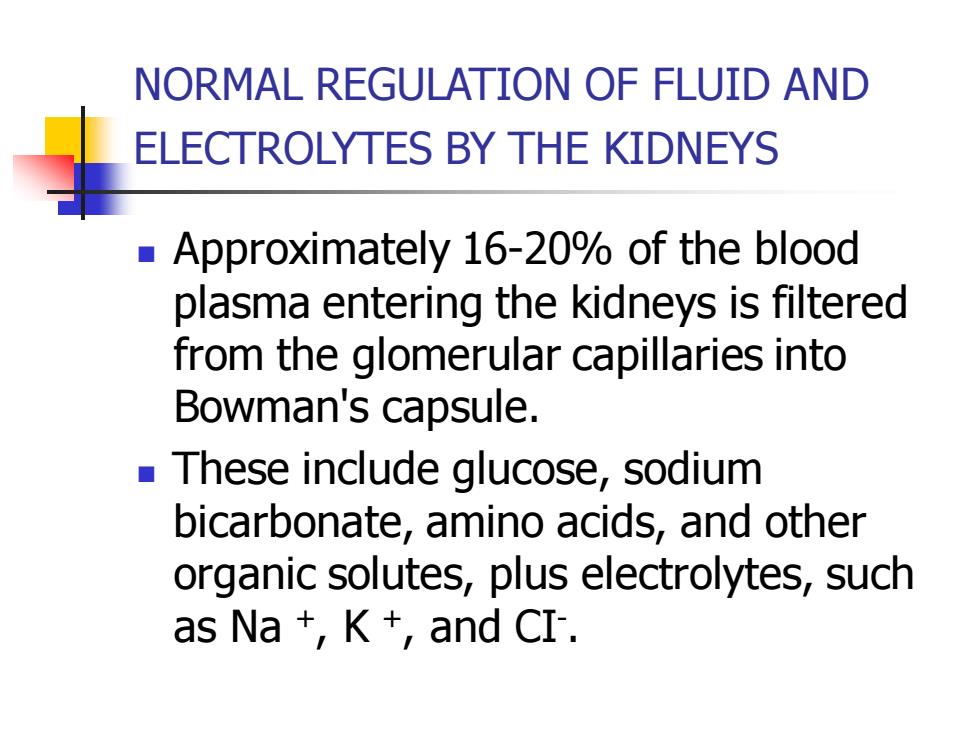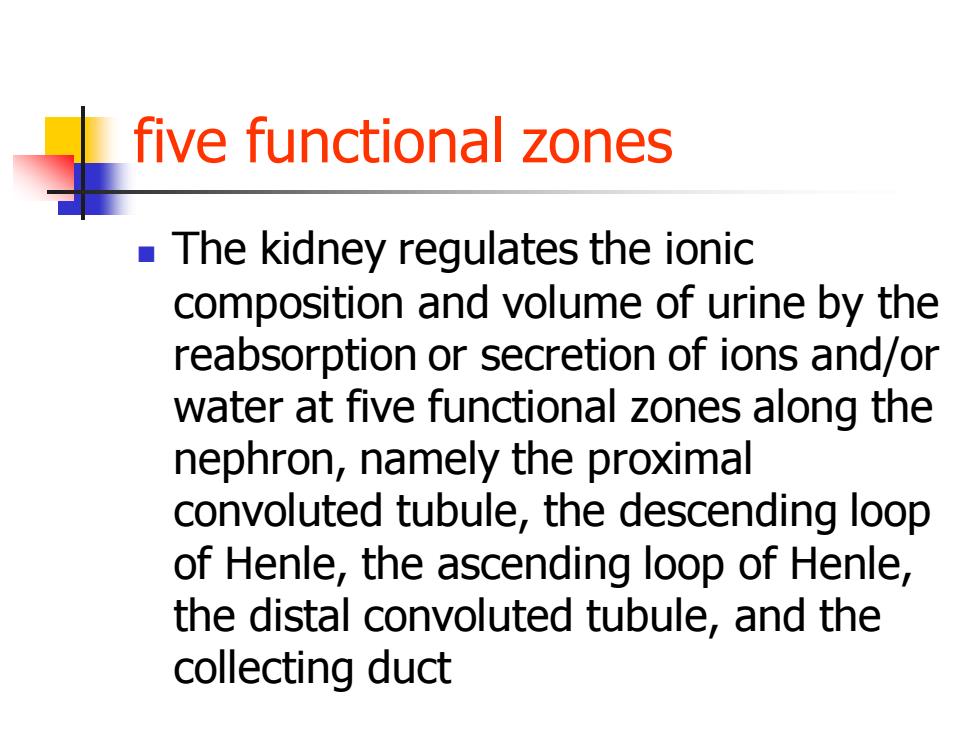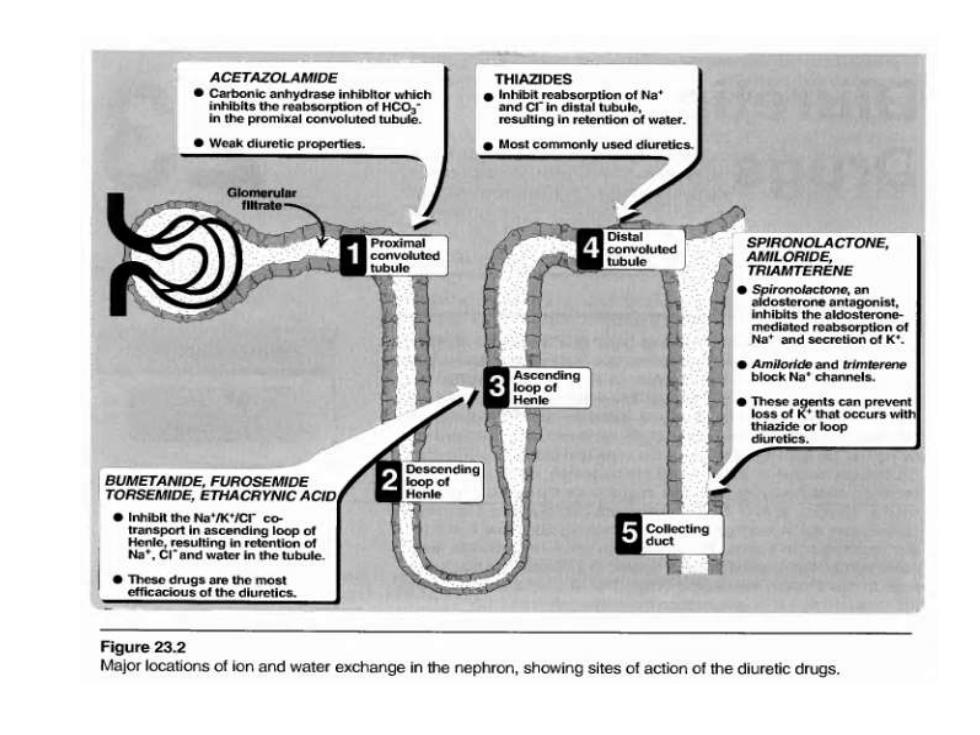
Diuretic Drugs
Diuretic Drugs

OVERVIEW Drugs inducing a state of increased urine flow are called diuretics.These agents are ion transport inhibitors that decrease the reabsorption of Na+at different sites in the nephron
OVERVIEW ◼ Drugs inducing a state of increased urine flow are called diuretics. These agents are ion transport inhibitors that decrease the reabsorption of Na+ at different sites in the nephron

NORMAL REGULATION OF FLUID AND ELECTROLYTES BY THE KIDNEYS Approximately 16-20%of the blood plasma entering the kidneys is filtered from the glomerular capillaries into Bowman's capsule. These include glucose,sodium bicarbonate,amino acids,and other organic solutes,plus electrolytes,such as Na +K+,and CI-
NORMAL REGULATION OF FLUID AND ELECTROLYTES BY THE KIDNEYS ◼ Approximately 16-20% of the blood plasma entering the kidneys is filtered from the glomerular capillaries into Bowman's capsule. ◼ These include glucose, sodium bicarbonate, amino acids, and other organic solutes, plus electrolytes, such as Na +, K +, and CI-

five functional zones The kidney regulates the ionic composition and volume of urine by the reabsorption or secretion of ions and/or water at five functional zones along the nephron,namely the proximal convoluted tubule,the descending loop of Henle,the ascending loop of Henle, the distal convoluted tubule,and the collecting duct
five functional zones ◼ The kidney regulates the ionic composition and volume of urine by the reabsorption or secretion of ions and/or water at five functional zones along the nephron, namely the proximal convoluted tubule, the descending loop of Henle, the ascending loop of Henle, the distal convoluted tubule, and the collecting duct

ACETAZOLAMIDE THIAZIDES n the prom Weak diuretic properties. Most commonly used diuretic Glomerular Proximal Distal convoluted SPIRONOLACTONE, convoluted tubule AMILORIDE ubulo TRIAMTERENE ·n loop of Henle 982aa8ca8m thiazide or loop diuretics. BUMETANIDE,FUROSEMIDE TORSEMIDE,ETHACRYNIC ACID ●nh the NaC58e ending loop of Collecting duct Figure 23.2 Major locations of ion and water exchange in the nephron,showing sites of action of the diuretic drugs